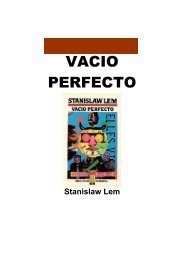cambridge-crime-fiction
cambridge-crime-fiction
cambridge-crime-fiction
You also want an ePaper? Increase the reach of your titles
YUMPU automatically turns print PDFs into web optimized ePapers that Google loves.
The golden age<br />
The perfected clue-puzzle was the form adopted by the scholarly American<br />
art-historian and intellectual journalist Willard Huntington Wright when he<br />
entered <strong>crime</strong> <strong>fiction</strong> as S. S. Van Dine. The Benson Murder Case sold rapidly<br />
in 1926 and his intricate, learning-heavy New York puzzles dominated the<br />
US market, with twelve novels and eleven films, until the irresistible rise of<br />
the private eye thriller in the mid and late 1930s. His detective Philo Vance<br />
is an archetypal East Coast American Europhile; Ogden Nash said famously<br />
that ‘Philo Vance needs a kick in the pance’, but it is hard to read the early<br />
novels, especially the footnotes, without feeling that Wright was, as Bentley<br />
had done with Trent and Christie would with Mrs Oliver, to some extent<br />
guying both himself and the form.<br />
His plots locate murder in the social and financial life of New York.<br />
With an intricate timetable of visitors and telephone calls Van Dine moves<br />
steadily – sometimes turgidly – through a range of suspects and their movements<br />
before finding a key physical clue. As in Christie, events are euphemised,<br />
even to the point of improbability: in a review of The Benson<br />
Murder Case, Dashiell Hammett noted that in reality the gun would have<br />
knocked the victim halfway across the room, and he thought the major clue<br />
was that someone had lifted him back into the chair. 31 But such mundane<br />
actuality is not the business of a Van Dine text: it is in part an intricate puzzle,<br />
in part an assertion of the conflicted energy of New York social and financial<br />
circles, and also a characteristic statement – like those then being made by<br />
Hollywood – that whatever Europe might develop, America can do better.<br />
Just as the early American women <strong>crime</strong> writers have been overlooked,<br />
the strength of the American clue-puzzle tends to be disregarded by British<br />
commentators and deprecated by the tough-guy preferences of most American<br />
academics. S. S. Van Dine was followed by the Ellery Queen novels: T.<br />
J. Binyon calls them ‘the most artificial of all detective stories’ but he also<br />
identifies their ‘impeccable fairness’. 32 Frederic Dannay and Manfred B. Lee,<br />
the two cousins who wrote as ‘Ellery Queen’ about a detective with the same<br />
name, won a publisher’s competition with The Roman Hat Mystery (1929)<br />
and remained both creators and critics of the form: their Queen’s Quorum 33<br />
is a scholarly and enthusiastic account of the best short <strong>crime</strong> stories and<br />
from 1941 they edited the influential Ellery Queen’s Mystery Magazine.<br />
Ellery Queen produced the purest clue-puzzles; their early novels include<br />
a formal ‘Challenge to the Reader’, advising that all clues have now been<br />
fairly given. The plots are highly intricate, turning on the possibilities of<br />
physical data – locked rooms, wrong corpses in the coffin, how many cups<br />
of coffee are in a pot. They can feel mechanical – Symons speaks of the<br />
‘relentlessly analytical treatment of every possible clue’ 34 – but they can<br />
83



